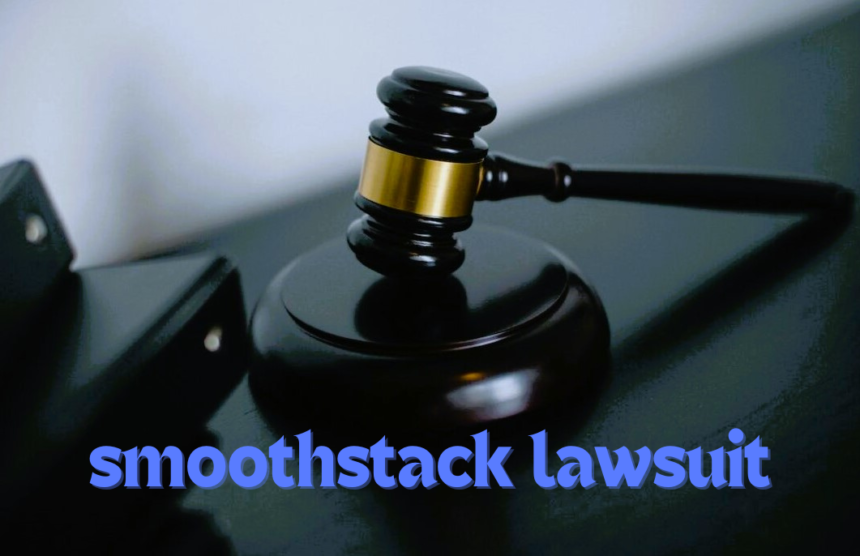The smoothstack lawsuit has gained significant attention due to its implications for both employers and employees in the tech industry. Smoothstack, a tech apprenticeship program, has been subject to various legal proceedings that concern employment practices, contracts, and labor laws. In this article, we will provide a comprehensive overview of the lawsuit, breaking down the key points, legal outcomes, and potential impact on future employment practices within the technology sector.
What is Smoothstack?
Smoothstack is a tech company offering training and job placement services to aspiring software developers and IT professionals. The company’s unique apprenticeship model aims to fill the talent gap in the technology industry by training candidates, helping them secure positions with partner companies, and providing on-the-job experience. Smoothstack’s program promises accelerated entry into the industry, but it’s been met with criticism and legal challenges in recent years.
The Smoothstack model operates on the basis that trainees sign agreements committing to the program for a specific duration. In exchange, Smoothstack provides technical training, mentorship, and a pathway to employment. However, several former apprentices have raised concerns over the nature of the contracts they signed, leading to lawsuits that question the legality of these employment agreements.
The Smoothstack Lawsuit: What Happened?
The smoothstack lawsuit revolves around allegations from former apprentices who claim they were subject to unfair labor practices. The core of the case lies in the employment contracts that required apprentices to stay with Smoothstack or its partner companies for a set period. If they left before completing the program or the agreed-upon employment term, they faced significant financial penalties.
The lawsuits allege that these contracts were restrictive and violated labor laws by limiting the workers’ ability to freely move between employers or leave their jobs. The employees claim that the contracts amounted to a form of indentured servitude, as they were bound by the agreements under terms that were not clearly disclosed or understood at the time of signing.
Key issues in the lawsuits include:
- Non-compete clauses that restrict employees from working for competitors.
- Repayment provisions that require employees to repay training costs if they leave the program early.
- Allegations of misrepresentation in the recruitment and onboarding process.
The lawsuit questions whether these practices violate state and federal employment laws, particularly those concerning fair wages, worker mobility, and freedom of employment.
Legal Arguments Against Smoothstack
1. Unfair Employment Practices
One of the primary accusations against Smoothstack is the use of contracts that heavily favor the company at the expense of employees. Critics argue that these contracts impose unfair restrictions on employees, limiting their ability to pursue other opportunities if they are dissatisfied with the program. The lawsuit suggests that these agreements may be illegal under certain state labor laws, which prohibit unreasonable constraints on worker mobility.
2. Non-Compete Clauses
The non-compete clauses in Smoothstack’s contracts have drawn sharp criticism. These clauses prevent former apprentices from working with any companies that are deemed competitors of Smoothstack. Critics argue that such clauses are too broad and restrictive, violating laws that aim to protect workers’ rights to seek employment freely.
Non-compete agreements are often enforceable only when they are reasonable in scope and duration. In this case, the lawsuit challenges whether the clauses in Smoothstack’s contracts meet these legal standards. The outcome of this legal battle could set a precedent for how non-compete clauses are applied in the tech industry moving forward.
3. Financial Penalties and Repayment Clauses
Another contentious point in the lawsuit is the repayment clauses that require employees to pay back the cost of training if they leave the program early. Employees claim these clauses act as a form of financial coercion, preventing them from quitting or seeking better job opportunities.
The lawsuits argue that these financial penalties are excessive and disproportionate, potentially violating labor laws. Such provisions have historically been scrutinized by courts for creating unfair financial burdens on employees who wish to leave their positions.
4. Lack of Transparency
Former apprentices also allege that Smoothstack did not provide full transparency regarding the terms of their contracts. Many claim that they were not fully aware of the restrictions and financial penalties imposed by the agreements until after they had already signed. The lawsuit argues that this lack of transparency constitutes fraudulent misrepresentation, further complicating the legality of Smoothstack’s employment agreements.
The Impact on Employees of Smoothstack Lawsuit
The Smoothstack lawsuit has raised concerns over how companies in the tech sector structure their apprenticeship and training programs. If the courts rule in favor of the plaintiffs, it could lead to a re-evaluation of how employment contracts are crafted, particularly in the context of non-compete clauses and financial penalties.
Employees affected by these contracts often feel trapped in their roles, unable to pursue other opportunities without facing significant financial consequences. The outcome of this lawsuit could provide greater protections for workers in the tech industry, ensuring that they have the freedom to pursue other job opportunities without being unfairly penalized.
Smoothstack Lawsuit Defense
Smoothstack lawsuit, for its part, has defended its practices, stating that the contracts are fair and designed to protect its investment in employee training. The company argues that the non-compete clauses and repayment provisions are necessary to ensure that apprentices do not take the training provided by Smoothstack and immediately leave for better-paying positions elsewhere. Smoothstack also contends that the financial penalties are proportionate to the costs it incurs in training apprentices.
The company has also emphasized that its apprenticeship program provides valuable opportunities for individuals to gain industry experience and secure long-term employment, which benefits both the apprentices and the tech sector at large. However, these arguments will need to be evaluated in court to determine whether Smoothstack’s practices are legal under current labor laws.
What Happens Next?
As the smoothstack lawsuit progresses, it will likely have far-reaching consequences for both the tech industry and employment law. If the plaintiffs succeed, companies may need to rethink how they structure their apprenticeship programs and employment contracts. The legal outcomes could also set new standards for non-compete agreements and financial penalty clauses in employment contracts, potentially providing greater protections for workers in all sectors.
It remains to be seen how the courts will rule, but the case has already sparked a broader discussion about the balance between protecting employers’ investments and ensuring employees’ rights to pursue new opportunities.
Conclusion
The smoothstack lawsuit highlights important issues in the tech industry regarding employment practices, worker rights, and the fairness of apprenticeship agreements. As the case unfolds, it will shape the future of employment law and set crucial precedents that will affect how companies can structure training programs and contracts.






